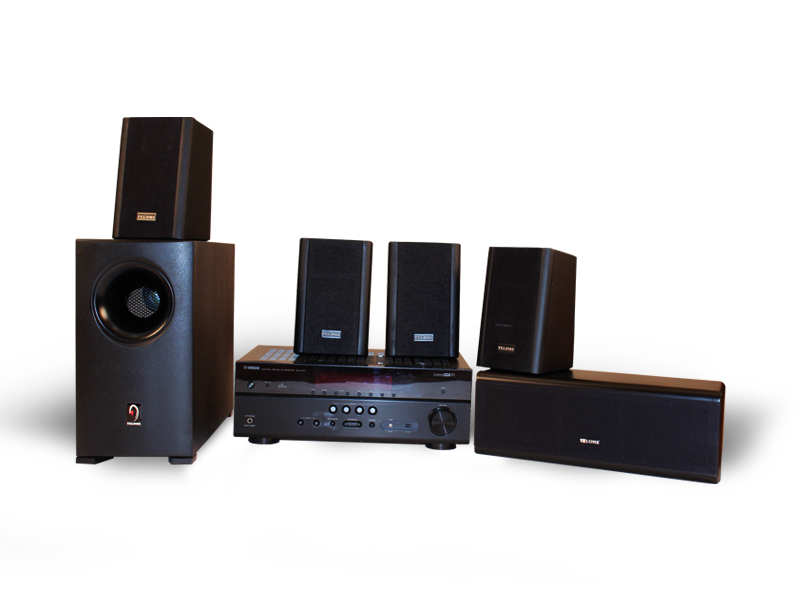
Surround sound in the home has been around for a while. To be exact, since 1969. At that time, ti was called Quadraphonic sound. This first came to home audio buffs by way of reel-to-reel tape. Unfortunately, quadraphonic sound was very short-lived. The technology, which provided discrete sound from four speakers placed in each corner of a room, was confusing to say the least.
However, the idea that you could immerse yourself in three-dimensional audio bliss continued to enthrall technologists. In 1982, Dolby Labs introduced Dolby Surround. This was a technology that piggy-backed a surround sound signal onto a stereo source through a process called matrix encoding.
Dolby has done its part in introducing and advancing surround sound in the home to the extent where as many as 11 speakers can be used to put you right in the middle of the action. So, you could hear a concert as if you were in the actual auditorium, or then, watch a movie as if you were in the cinema hall.
A surround sound system explained
There are several different formats where surround sound is concerned. These include 5.1, 6.1, 7.1, 9.2, and so on. Confusing? You bet! That's why we've written this blog...
Surround sound at its most basic, consists of a set of stereo front speakers (left and right), and a set of surround speakers, which are placed to the side and just behind a central listening position.
You should also add a center channel, which is mainly responsible for reproducing dialogue in movies. So, we have a minimum of 5 speakers. You can add additional speakers later, but this basic five-speaker arrangement is the minimum needed for a surround sound format. If the surround sound system has a 5.1 format, this means that there are 5 speakers and 1 subwoofer.
If you have a surround sound system arrangement of 7.2 or 9.2, don't get confused. It simply means that there are 7 or 9 speakers and 2 subwoofers.
These days, Home Theater Receivers typically have inbuilt surround sound processing. So, for a 5.1 system, you will need (at the very least) 5 x speakers, a 1 x subwoofer and a 1 x matching Home Theater Receiver.
Home entertainment surround sound systems add great quality sound to home television viewing. However, you should evaluate your existing devices for connection options. You should also evaluate the room that you plan to install the surround sound system in, especially for size and echo.
You should also research the various component configurations, such as a custom setup, a home theater in a box, or virtual surround sound. When choosing a surround sound system, you should carefully consider your budget and the room that the system will be in. Also, do listen to advice from people who are experienced in setting these systems up.
So, now you know more about surround sound systems than you knew before reading this. Do shop around, including online for the ideal surround system for you and buy the right one! Here's to remarkable sound!
Did you know this about your surround sound system?









